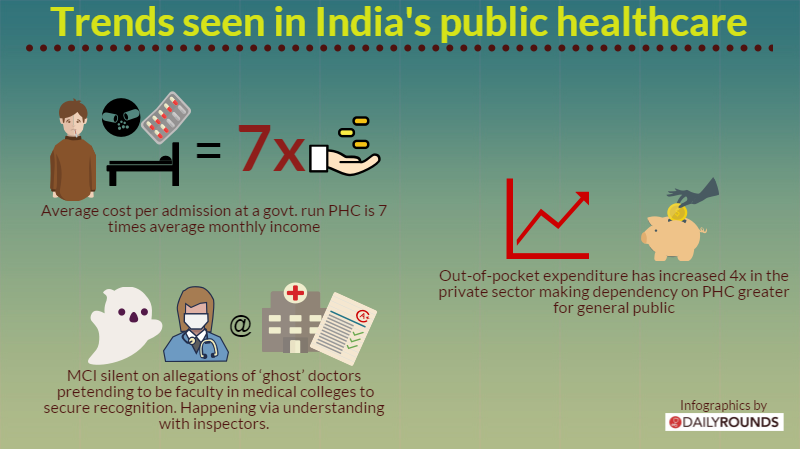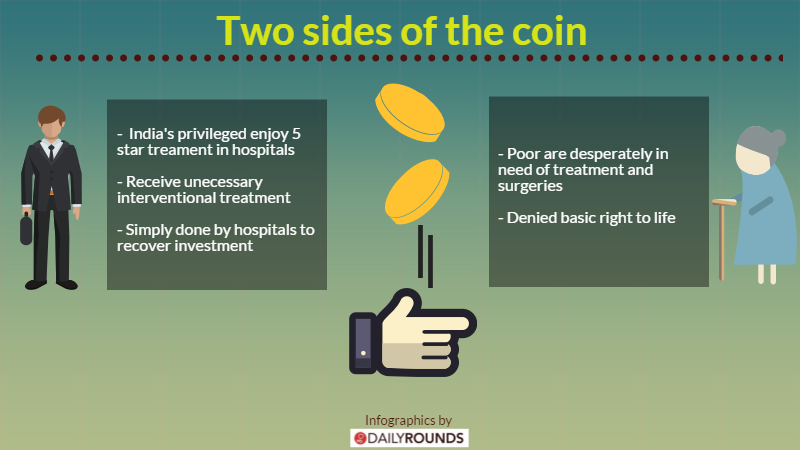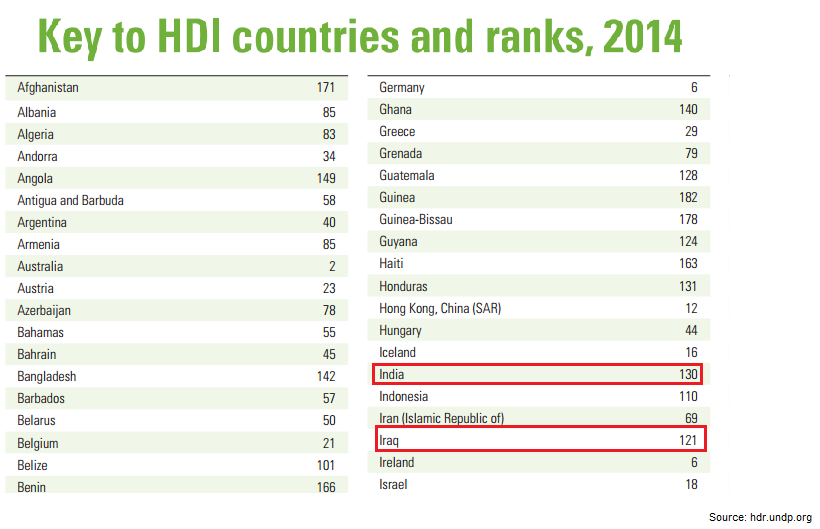
How universal health coverage in India will provide better medical coverage and prevent health scandals
India needs a standardized unified healthcare system, to reduce the gap between the ‘quality’ of healthcare the rich and the poor are getting.
Bihar People’s Health Movement and National Sample Survey have come across shocking data such as – average cost per admission at a government hospital costs 7 times the monthly income, instances of ghost doctors being shown at hospitals to secure recognition and how even the expense of consulting a private healthcare provider has increased 4 folds.
A piece written by Vikram Patel who works with the Public Health Foundation of India and the London School of Hygiene and Tropical Medicine highlights the issues with India’s healthcare scenario at the grass roots level and how a ‘universal healthcare initiative’ is the need for the hour.
India’s healthcare system – a stain on our conscience
The recently reported botched up cataract camp news and the fact that ‘health camps’ being fronts for companies to market pharmaceuticals and other medical products. Daily media reports on the state of the healthcare system painted one simple picture – India’s isn’t up to the mark !
On one end there are people being pampered in 5-star hospitals equivalent to luxurious hotels where they receive unecessary interventional treatment. The aim of these hospitals is to simply make back the investments made to build these hospitals. On the other side, there are people who desperately need medicines or surgeries and are denied their basic right to life.
Iraq’s healthcare system ranked higher than India !
There is a mismatch in the power and information within the healthcare system. Meaning, lack of regulation and medical profession where one has to be lucky to find a medical facility or doctor who treats patients with dignity, maintains transparency and evidence while being ethical.
The 2015 Human Development Report by the UN clearly stataes this, and shows India ranked 129 places behind other countries. Even more shocking is the fact that it is ranked lower than 121 ranked war-torn Iraq, which despite a decade long conflict still enjoys a higher life expetancy than India.
So why’s no one upset?
Despite all these facts and glaring gaps in the system, no one seems very upset. Why’s that? Two points of view that eminent commentators are expressing have been presented by Amartya Sen in his book ‘The Country of First Boys’ . Firstly, he says that the growing gap between the privileged and the rest is being tolerated silently and with a sense of complacence that in reality is disturbing enough to cause sleepless nights. Secondly, and most tragically Sen says that despite these gaps, India is the ‘world’s factory of cheap medicines and high-skilled doctors’ and
Another book suggests that it is India’s privileged instead of dealing with the issue of a balanced healthcare system have chosen to simply look the other way and ignore it. Its believed that they simply don’t care.
Beyond the usual fixes
The usual prescription for success will not do. A radical approach is required. Something that unifies the country to come up with a – “root to branch” reform of India’s healthcare system. This will help not only the underprivileged but society as a whole.
What is expected is – strong government leadership, active participation from healthcare professionals and the society. The government should play an active role to begin with by practicing true – economic development and social justice.
This is done is by borrowing ideas from countries who have universal health coverage, a national healthcare system (integrating public-private sectors) and are operating on standard set of regulations. Citizens can eventually be guaranteed quality care free at the point of delivery. The countries that are at the top of the human development rankings all have some form of universal health coverage in place. Until India commits to this goal, the healthcare facilities in the country will remain unorganized and underutilised.
Original Post: Hindusthan Times
Image Credits: UN HDI Rankings 2015
Infographics: Daily Rounds



